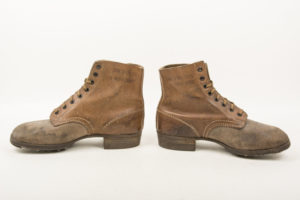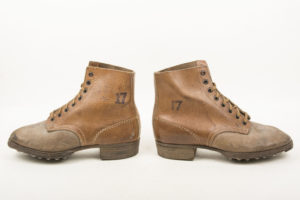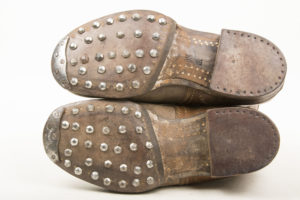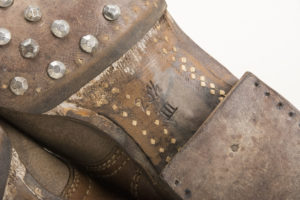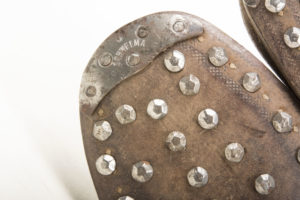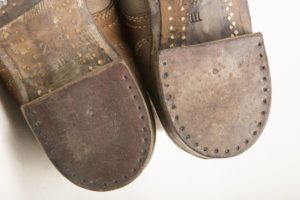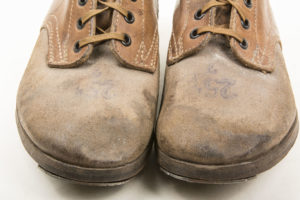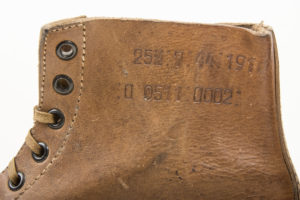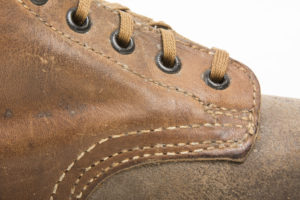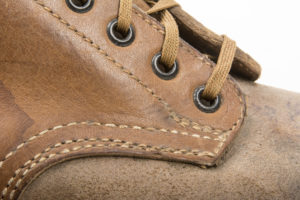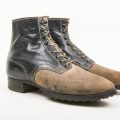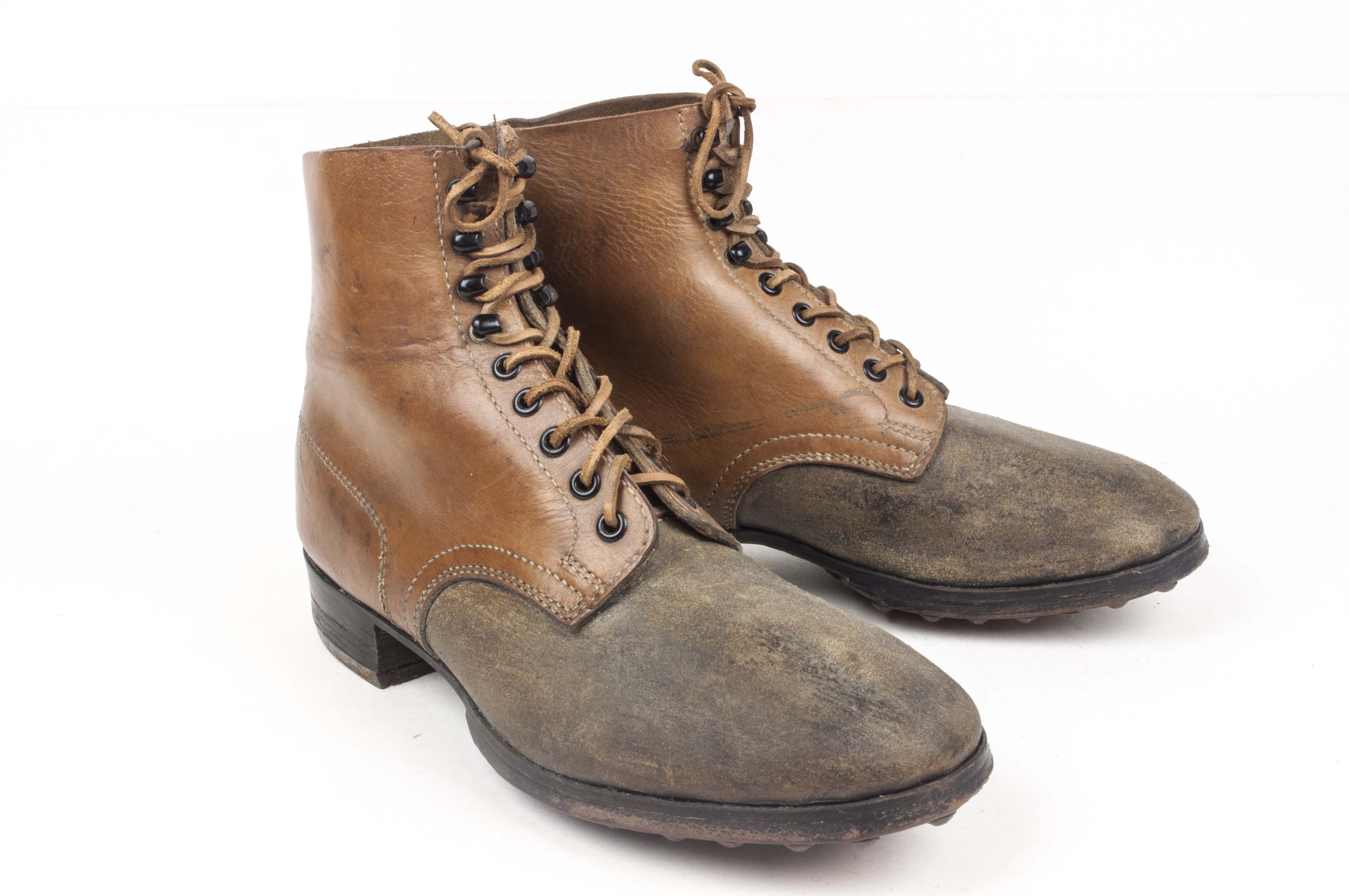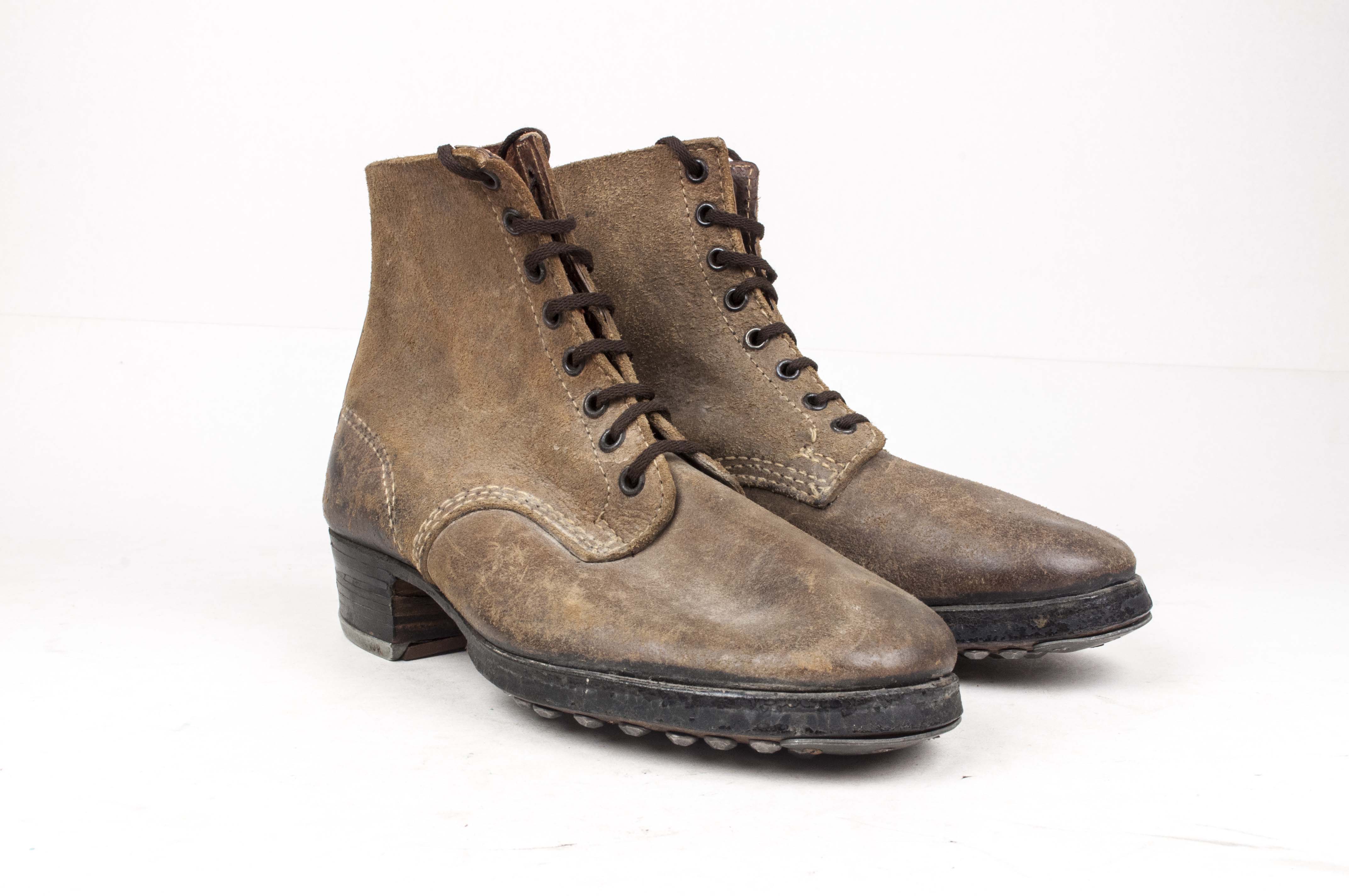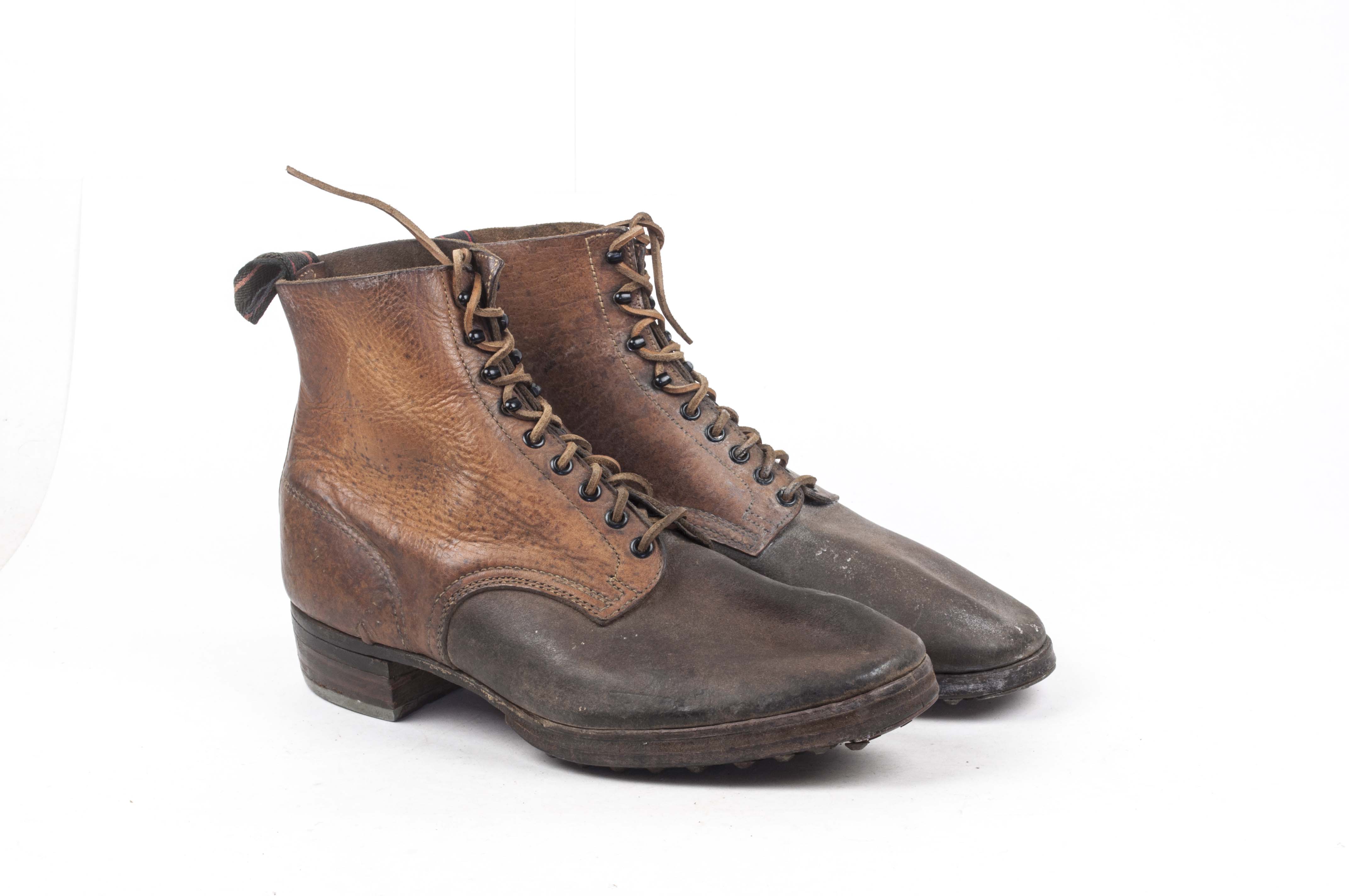M37 lowboots – 0/0511/0002 – 1944
Eversince 1937, Soldiers in the German army received a pair of Schnürschuhe (lowboots) next to their issue pair of Knobelbecher(Jackboots). They where first only meant as a part of the Drillichanzug(a offwhite uniform for basic training made of linen HBT) but as the war progressed the Schnürschuhe saw action on the front. They where meant to be worn with Gamaschen(Gaiters) to overlap the boots with the trousers.
The Schnurschuhe are always made following a certain army design. they close with a set of 5 eyelets and 4 speed lace hooks. Later in the war the 4 speed lace hooks where omitted and replaced by 4 eyelets. The sole consists of 3 major components; the heel, the base sole and the front half sole. The heel is constructed of a series of stacked leather pieces and has a steel heel iron. The base sole is slightly curved and stretches from front to back. It is both stitched and nailed with wooden pegs. The Stitches normally run in a “hidden stitch” left and right of the wooden pegs. The front half sole was affixed with wooden pegs and carries a number of steel hobnails. Though most boots come out of the factory untanned, the sides of the soles where always blackened. The soldiers where ordered to blacken the boots until it was discontinued in 1943.
This is the textbook German m37 lowboot. There are off course variations, especially later in the war.
Sole length: 25 1/2
Sole width: 7
Lot number: 1916
Markings: 0/0511/0002
Maker: It is unclear to what manufacturer 0/0511/0002 refers
Month: –
Year: 1944
Material: Natural brown leather
Notes: A textbook pair of M37 Schnürschuhe in unissued condition. The leather is strong and very supple on these boots and they are complete with their original laces. The pair was made in 1944. Size 25 1/2 which corresponds roughly to a modern size 40. The pair has its original hobnails but was manufactured without a pair of steel heel pieces. Both boots are made out matching shades of leather. Note the multiple ink stamps on the side and the front, this was done during the construction to mark the parts!




